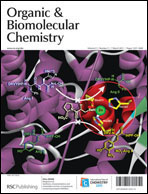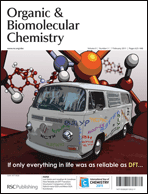For [2]rotaxanes to have viable applications in molecular electronics, full control over the shuttling kinetics of the ring molecule is necessary. J. Fraser Stoddart from Northwestern University and colleagues have shown that introducing reducible, positively-charged moieties into the rod structure effectively creates ring shuttling ‘speed bumps’.
The team synthesised degenerate [2]rotaxanes incorporating positively bispyridinium derivatives and two 1,5-dioxynaphthalene (DNP) units on the rod portions of their dumbbell components, encircled by a single cyclobis(paraquat-p-phenylene) tetracationic (CBPQT4+) ring. By partially reducing the conjugated bipyridinium ring, the electrostatic barrier to shuttling is removed, and the ‘speed bump’ now acts as a further recognition site. The [2]rotaxane also becomes bistable.
The shuttling of the ring is redox controlled and fully reversible; the group hope that this type of redox-active bistable molecule may pave the way to developing candidates for the next generation of molecular electronic devices.
This interesting HOT article is currently free to access until the end of March:
Degenerate [2]rotaxanes with electrostatic barriers
Hao Li, Yan-Li Zhao, Albert C. Fahrenbach, Soo-Young Kim, Walter F. Paxton and J. Fraser Stoddart
Org. Biomol. Chem., 2011, Advance Article
DOI: 10.1039/C0OB00937G















